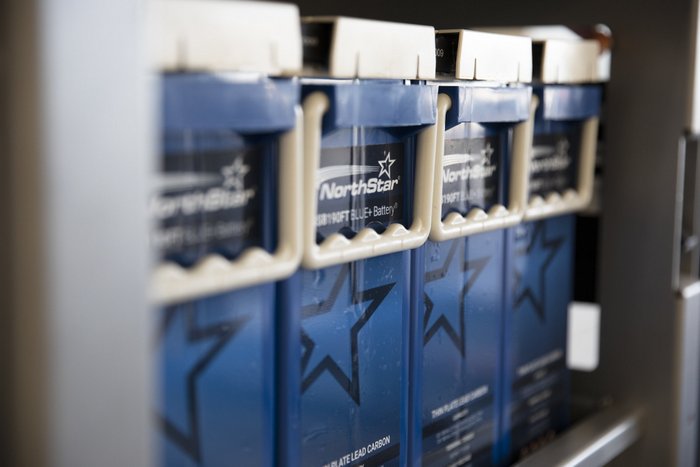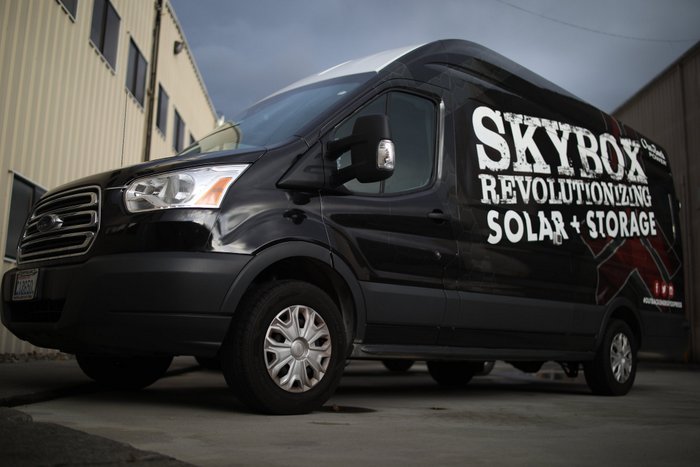The wildfires and resulting (and ongoing) public safety power shutoffs (PSPS) are leaving thousands of Californians without power and searching for answers. As a solar installer, you are in a prime spot to provide some of those answers in the form of backup storage.
“Solar system owners in California with net-metering agreements are learning the hard way that when the grid goes down, so do their panels,” said Sanjeev Choudhary, Vice President of Renewable & Industrial Energy Storage Systems of Enersys. “Preemptive shut-offs due to wildfires are the new normal for California, and residents across the state realize they need to take direct control of their power if they want electricity when they need it.”
In an effort to help, Choudhary notes that Enersys will be offering its 24% discount on OutBack solar and storage systems for affected Californians until March of 2019 (more details below). Coupling that with the upcoming SGIP funding reauthorization, and you can offer your customers a pretty solid deal to increase their energy independence and resiliency in the face of PSPSs.
Here are some tips for finding and following up with those customers in need.
Training for storage
If you haven’t yet, set up key staff to be trained on battery installations. If you don’t have enough time for that, partner with another installation company and refer clients to them with a formalized referral fee until you can handle the jobs yourself. You might want to check out our 12 Days of Storage last year, which covered a variety of topics. Here is a crash course on battery system sizing.
Get familiar with licensing requirements for installing battery systems – battery retrofits can have different requirements than when the same battery is installed alongside a PV system.
Understand incentives
Get educated on new requirements, laws and opportunities. In California, this means the Self-Generation Incentive Program (SGIP), which was set to expire until SB 700 passed with broad bipartisan support to reauthorize the $800 million program until 2026. Funds are due to be replenished in April, but you can install now and get a rebate later, as long as you submit your application within a year of installing. Current incentives are $250 per kWh for residential systems, which pays around a quarter of the cost. The federal tax credit additionally pays 30% of the cost when storage is paired with solar for systems installed in 2019 and 26% for systems installed in 2020.
One important note though: If SGIP rebates are a big part of your pitch for a backup storage system, the SGIP rules require that a homeowner charge and discharge the battery on a regular basis, rather than keep it fully charged at all times for backup purposes only.
This shouldn’t be a deterrent though. In fact, it should be seen as one of the big reasons to go with storage over a fossil fuel generator.
“When paired with the right size solar array, an energy storage system can provide backup indefinitely – and it can often pay for itself by managing time of use rates and reducing demand charges,” says Paul Dailey, Director of Product and Market Strategy at OutBack Power.
A customer can cycle the battery in some months of the year to cut down on electric bills and reserve the battery for backup purposes in months that are more vulnerable to wildfires and blackouts. The PSPSs are often announced ahead of time too, which should leave ample time to make sure the battery is fully charged.
Last SGIP note: For customers in low-income housing and customers with special medical needs in high fire threat districts, the SGIP incentive pays for the full cost of a storage system up to $1000/kWh. Customers in low-income housing that are not in high fire threat districts qualify for an incentive of $850/kWh.
Customer Relations
Once you feel solid with your service offering, it’s time for followups. Review your existing customer list and overlay their locations with the maps of fires, evacuations and outages. Here is one approach for doing so suggested by OutBack:
- Sort list by priority
- Start making calls and leaving messages.
Contact existing customers and ask how they are doing.
- If their homes were in the path of wildfires, call to see that they are okay
- If their homes were in the evacuation zones, call to see how they are doing
- If they were in the power shut off zones, call to see how they fared during the power outages and
- Mention that their solar system doesn’t have back up and gauge their interest in that.
- Mention that several battery companies are offering special pricing on residents affected in California
- Mention that lithium-ion batteries specifically can also provide rate price optimization and energy management to avoid demand charges and peak pricing during times of high demand
Design a list of past customers who are top targets for battery backup and cross-correlate their locations with existing jobs.
- Provide an incentive for heads of crews to pop in to see customers and check on them when they are in the area working on another job.
Update marketing materials
- Update your website to feature battery backup topics and capabilities.
- Send out an email newsletter and social media posts about battery banks and your capabilities.
- Design a direct mail advertising graphic, and mail it out to past customers in California proposing the topic of battery backup
It would also help to show the pros and cons of going with a backup generator versus an energy storage system.
“Many of the generators and battery systems being sold today let everything shut down before the backup system kicks in and in some cases, it requires a manual start. But, we’ve been doing this for decades and the technology in our packages provides customers with a seamless solution,” Dailey says. “The transfer from the grid to backup is completely automatic for customers after system installation. It senses when grid power goes down and independently switches to the backup power within a fraction of a second. When you install a backup system, you want to feel confident it’s going to work. That’s what we provide.”
OutBack’s Packages
If you or your customers are interested in the special, extended California 24% discount, here’s a snapshot at the OutBack product offering:
SkyBox SystemEdge 511PHI – CA
● 10.5kWh of nameplate energy storage
● One 5kW SkyBox true hybrid energy system
● Three SimpliPhi 3.5kWh lithium ferrous phosphate batteries
● One IBR-2-48-175-LI integrated battery rack
SkyBox SystemEdge 514PHI – CA
● 15kWh of nameplate energy storage
● One 5kW SkyBox true hybrid energy system
● Four SimpliPhi 3.8 kWh lithium ferrous phosphate batteries
● One IBR-2-48-175-LI integrated battery rack
SystemEdge 821PHI – CA
● 22kWh of nameplate energy storage
● One 8kW FLEXpower Radian integrated system with FLEXmax100 charge controllers
● Six SimpliPhi 3.8kWh lithium ferrous phosphate batteries
● One IBR-3-48-175-LI integrated battery rack
● One RSD-AFCI rapid shutdown combiner system
● One FWPV6-FH600-SDA combiner
— Solar Builder magazine



Leave a Reply
You must be logged in to post a comment.